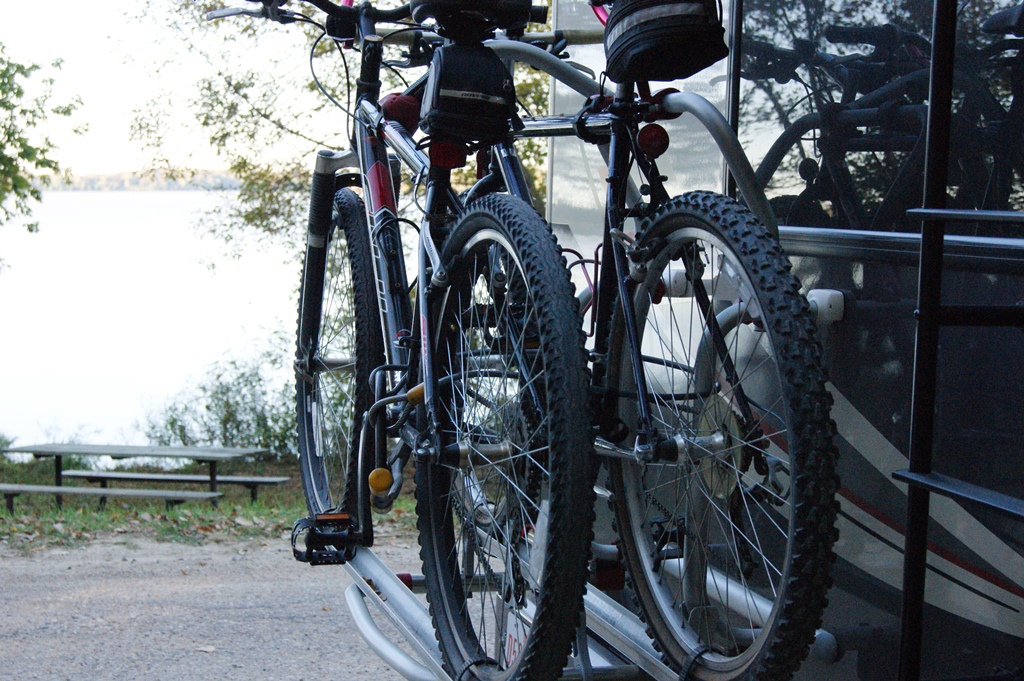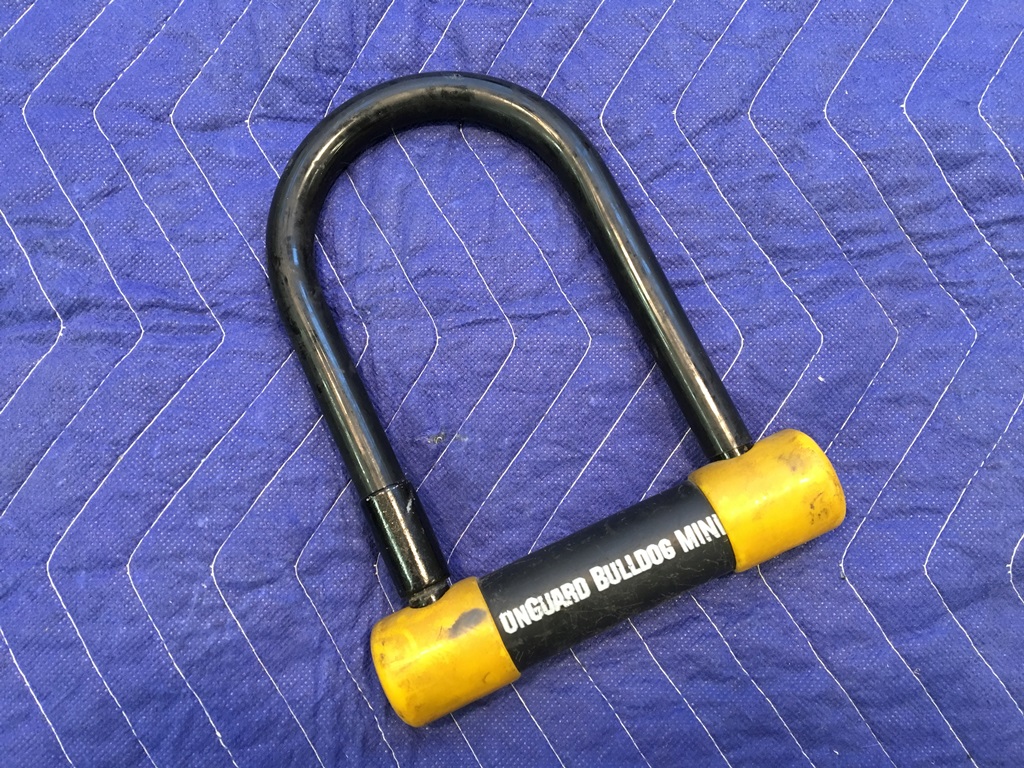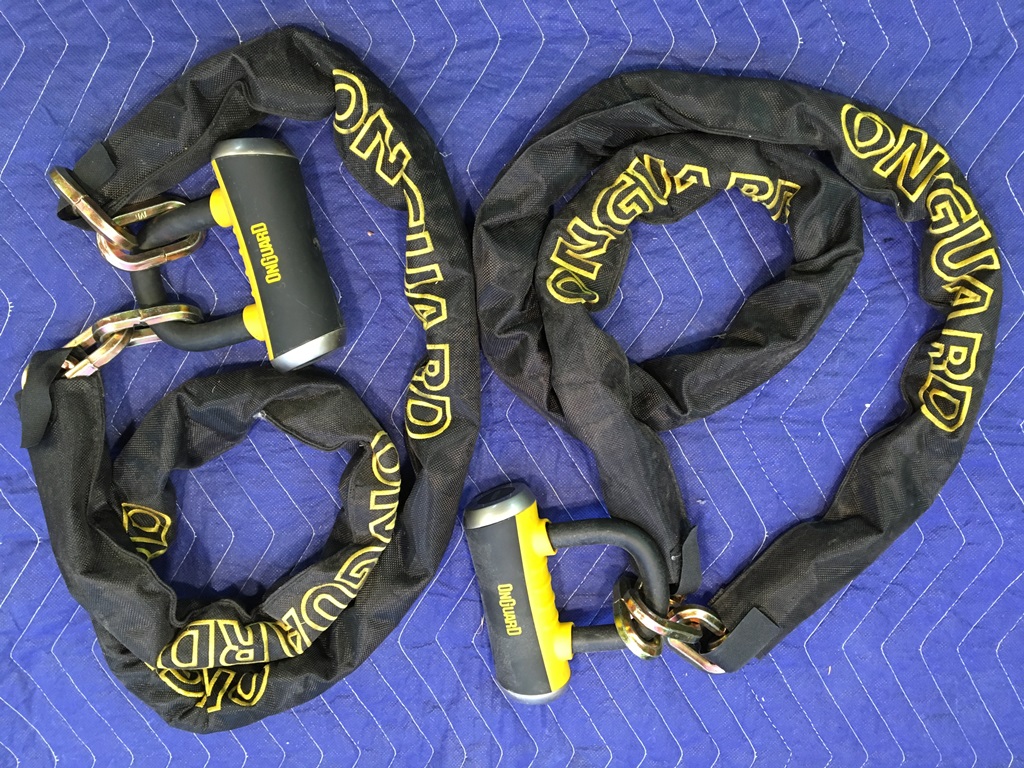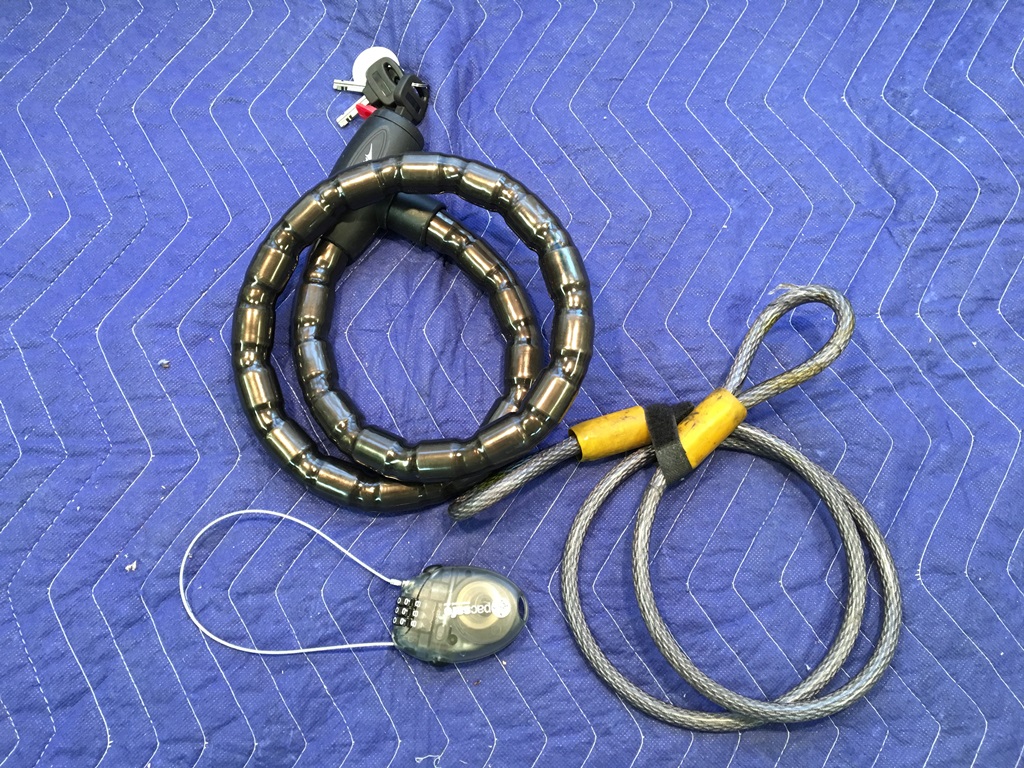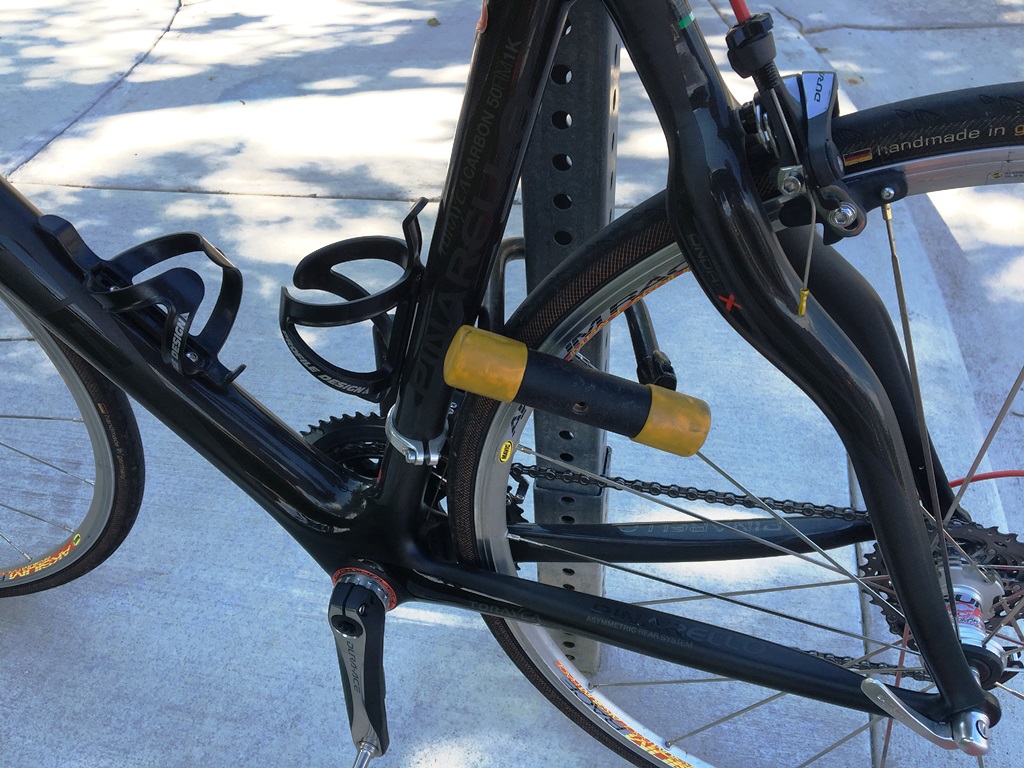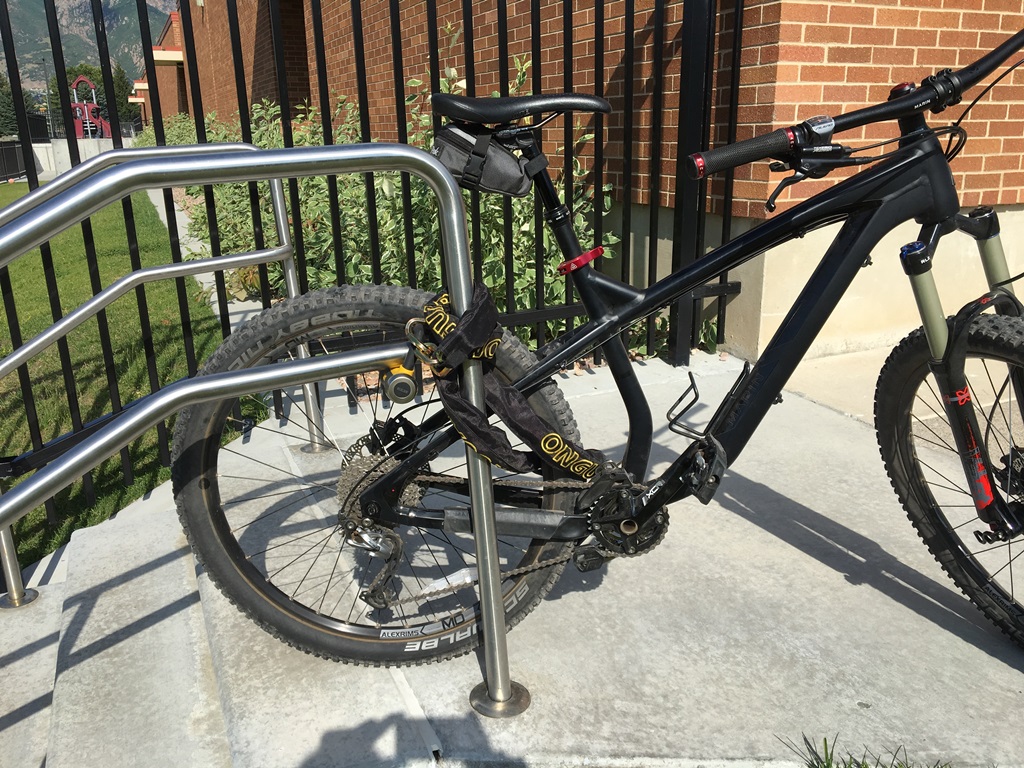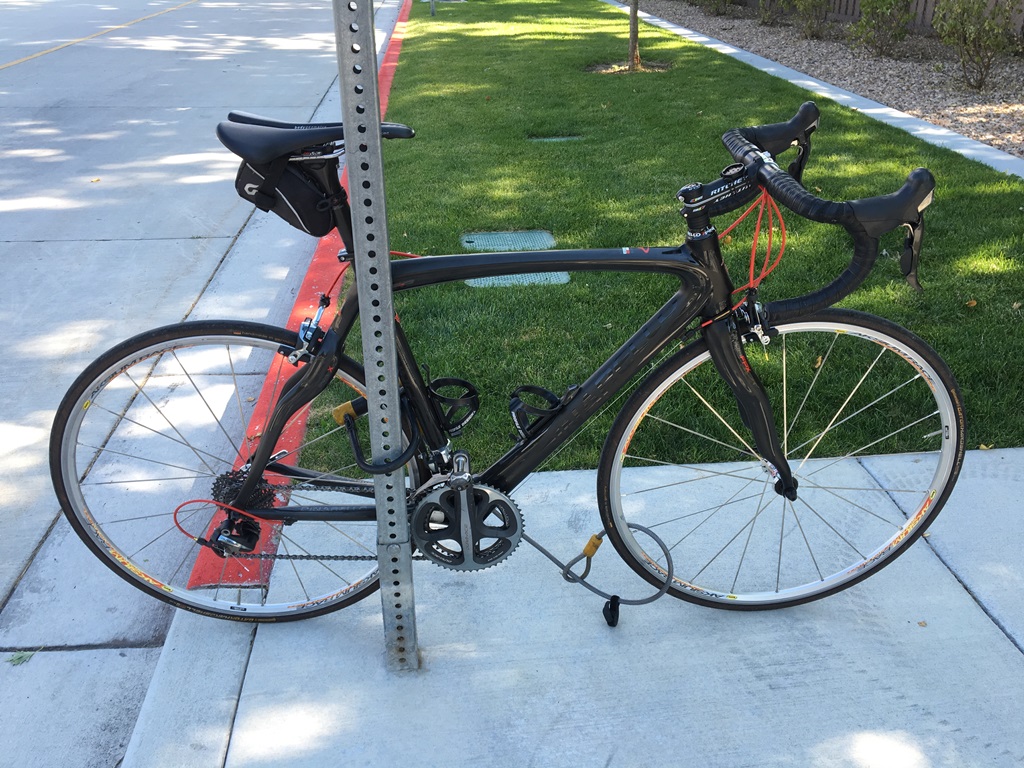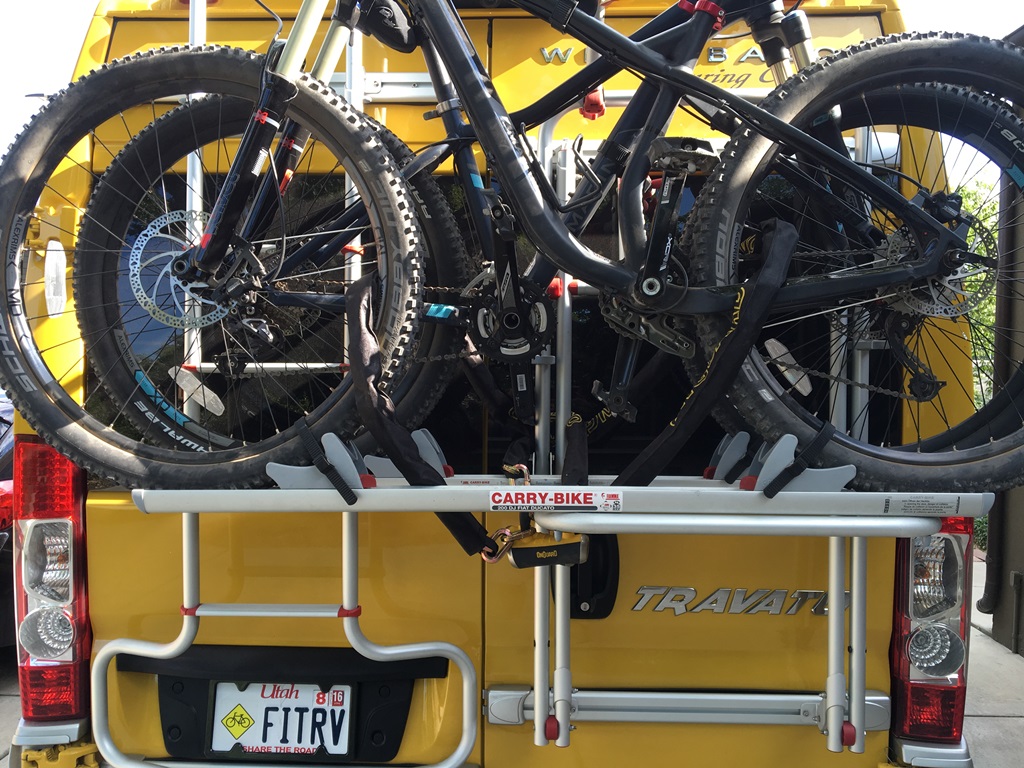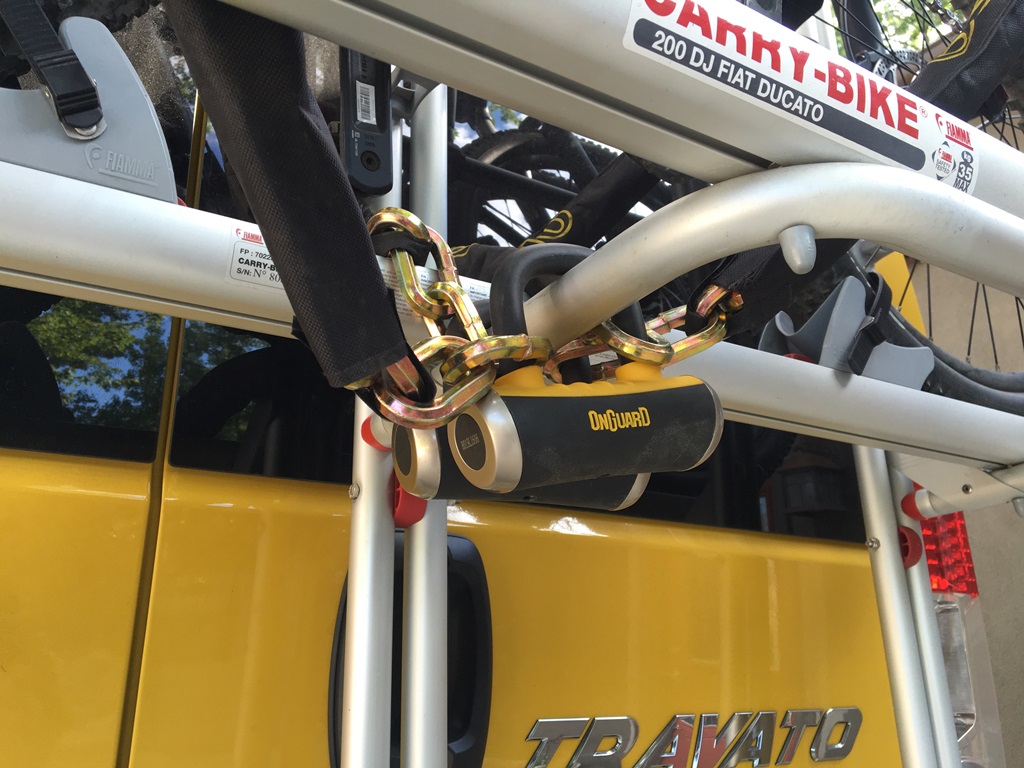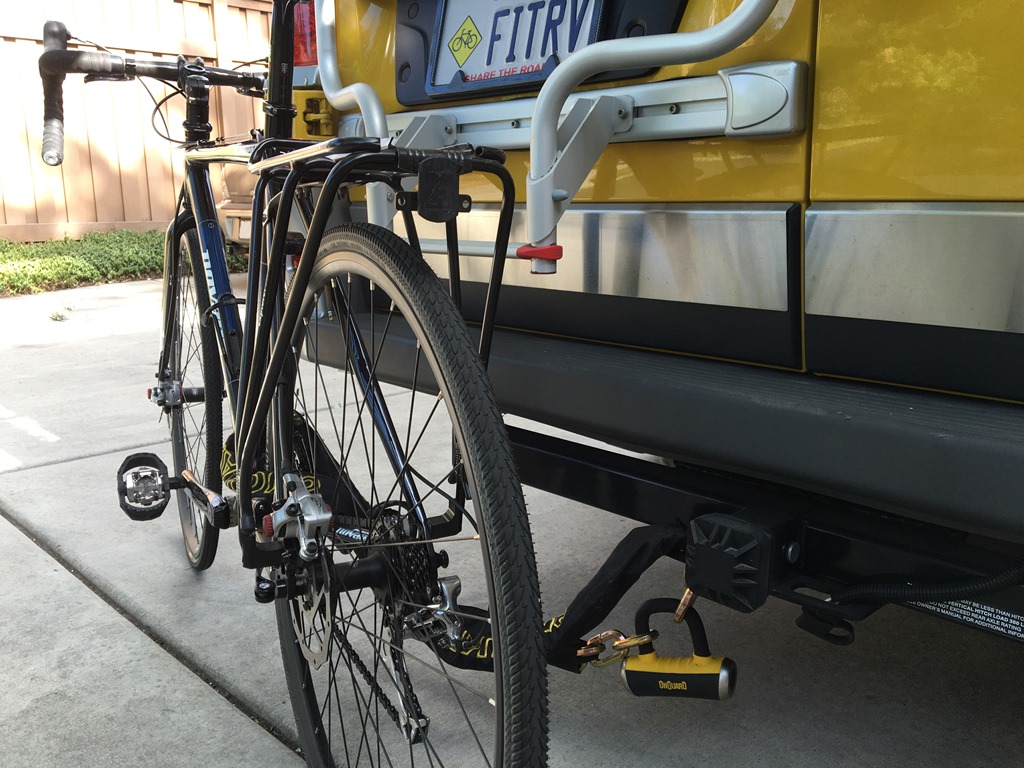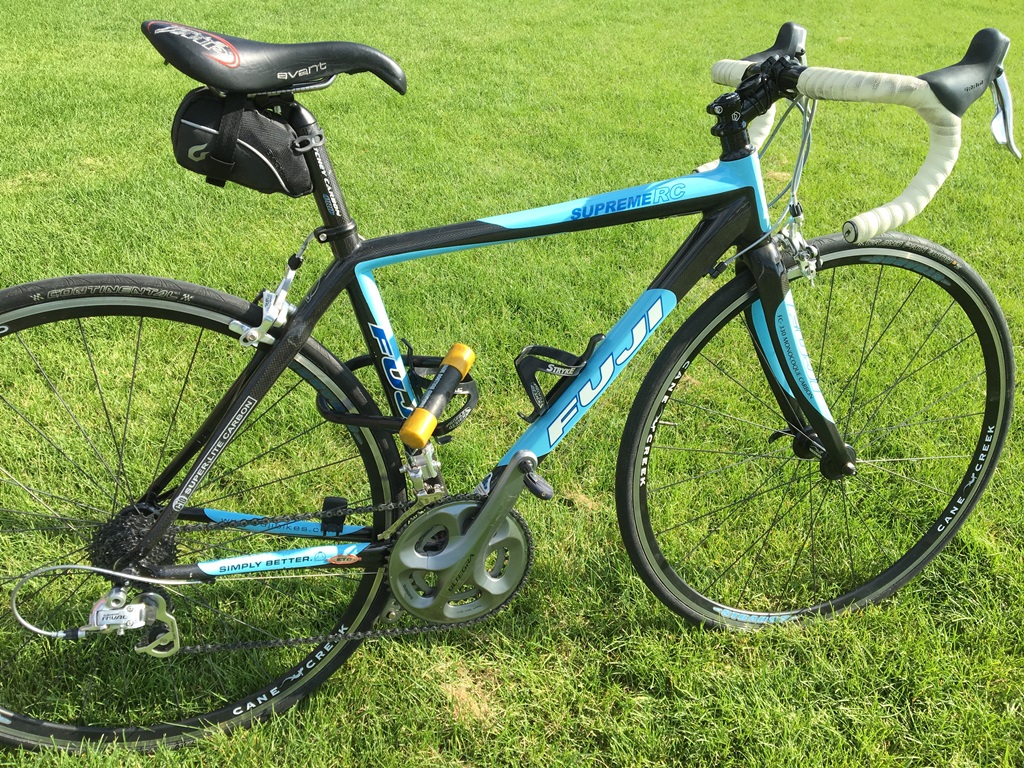
Go Gear: Bike Locking for RVers

It's almost time for GNR, and so far it's been a great summer of riding and RVing! I've previously done a video about how to use the Fiamma bike racks, like the ones Winnebago is including on some of their RVs. But I didn't cover another important aspect of RVing with bikes, and that's locking them. So let's fix that today.
Some Ground Rules
First off, I want to say that this advice is geared towards RVers. We like to camp and get out in nature. If we're in campgrounds, there are usually some other folks around. And we're using the bikes primarily for recreation, and not as transportation. So, if you're leaving your bike locked on a New York City street unattended for hours at a time -- maybe this isn't the article for you.
The next point I want to make is that locking your bike is done to protect against theft of the bike. You can't lock your bike to prevent vandalism -- that's impossible. And for the most part, locking won't even necessarily prevent theft of bicycle accessories. What you're trying to prevent with a bike lock is coming back to find the whole bike just gone, so let's keep that in mind as we think about locking bikes.
Finally, it's also helpful to remember that bike thieves are lazy, and bike theft is usually a crime of opportunity. We're trying to remove or limit the opportunities a bike thief will look for. The big opportunity you'll remove with a lock is the ability to get away with the bike easily. If you can render your bike un-rideable, or even un-rollable with a lock, your typical opportunistic bike thief is going to look for an easier target.
Match the security to the situation
The next thing to think about is matching the level of protection to the bike. It should be obvious, but I'd apply different locking strategies to my very expensive time trial bike than I would apply to a beater bike from the 1980s. The same should apply to you. If you're OK with your bikes living outside all the time, that calls for one level of protection. But if you insist on indoor climate controlled storage for your bikes - well that requires something else. (Yes. That's me.)
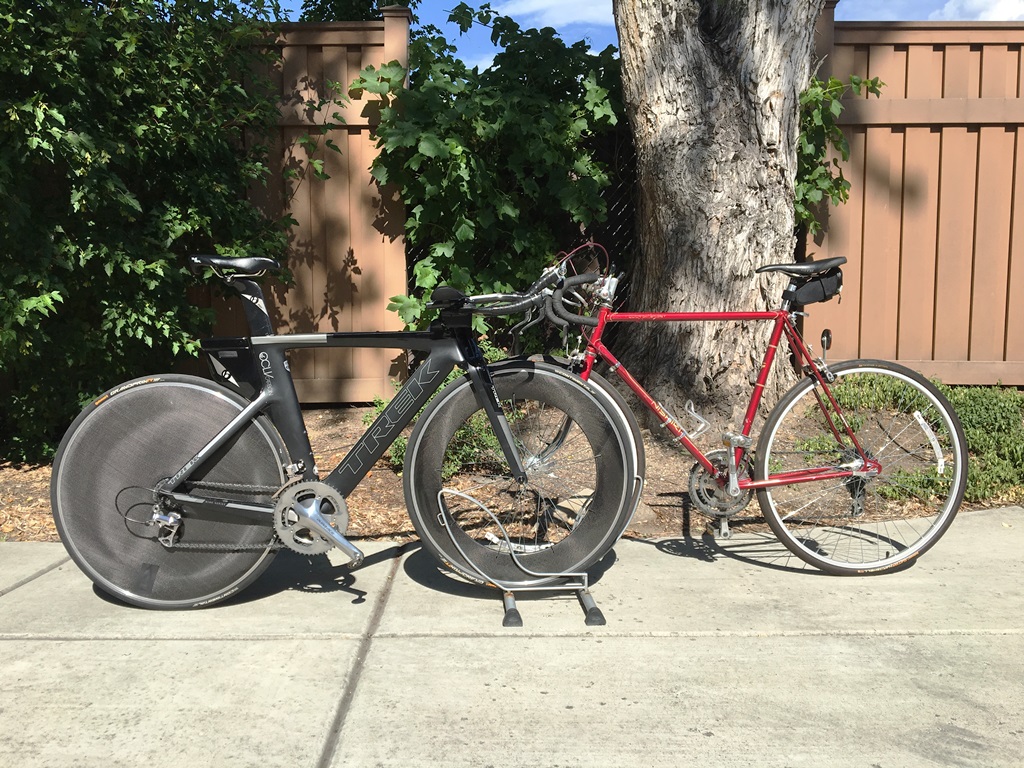 "These two bikes have very different needs... including locking."
"These two bikes have very different needs... including locking."
The other thing you should consider is where you're going! If you're talking about hanging out in a big field in Iowa with a bunch of other RVers (Hello GNR!), again, that requires a different level of security than street parking in downtown Baltimore. Plan accordingly.
Some of the most secure and bomb-proof bike locks are also the heaviest and most awkward. So once you realize there are different levels of theft protection you might want, you can purchase and use a locking system that meets your needs without becoming a burden itself. With that in mind, what are some of the products out there?
Bike Lock Types
Probably the first thing that comes to mind is the typical U-Lock. Pictured above is the U-lock that we travel with, it's an older and smaller version of the OnGuard Bulldog U-Lock. I think of a good U-lock as sort of the entry point into bicycle locking. If you get a good one, it can't be defeated with bolt cutters (the preferred weapon of bike thieves). And you'd have to spend a long time with a hacksaw to get through it.
A battery powered angle grinder might defeat it, but someone using an angle grinder at the campground is probably going to attract some attention. U-locks are susceptible to prying attacks (which is where you get a bottle jack or a crowbar into the empty space and use the leverage to pop the lock). If you're buying a U-Lock, try to get the smallest one you can get away with to reduce the opportunities for prying attacks.
Next up is a chain lock. We travel with two of these, the OnGuard Mastiff. This chain weighs about 10 pounds (seriously). They're reinforced steel -- there's no way to cut them with bolt cutters. And even a hacksaw or angle grinder is going to need a good bit of time to get through them. These are the locks we use on the outside of our RV when we lock bikes up to the back. It's the highest level of bike security we RV with.
There are other styles of chain locks too, some with integrated locks and some without. They're not quite as tough as the beast here, but they might have their place somewhere along the sliding scale of security.
And finally, there are cables, cable locks, and other hybrid locks. These are the easiest to defeat -- most of them can be defeated with just cable cutters or bolt cutters. Personally, I don't rely on these for primary security, but we do travel with one cable. We also have a Pacsafe Retractasafe that I carry sometimes. It's terrible primary security for a bike, but it can be useful for things like locking your bike when you're dining at an outdoor cafe and can see it. (In that case, I just need to slow the thief down so I can catch them.)
Cable locks aren't great, but they're better than absolutely nothing. They are useful as a way to augment your primary lock. They require a different attack than a U-lock, for example. And so by using two kinds of locks, you force a potential thief to carry two types of tools, which makes theft less likely.
OK. Got a lock. Now what?
Now, about HOW to lock your bike. If you do any research online, you'll come across the name Sheldon Brown. The late great Sheldon Brown left a great repository of cycling knowledge. He proposed that basic bike locking can be done very simply.
According to Sheldon, all you need to do is to secure just your rear wheel to an immovable object through the rear triangle of the bike, like this:
If you secure the bike that way, it can't be rolled away or ridden, and the rear wheel can't be removed from the frame. Granted, it doesn't seem, from looking at it, that this would be enough, but it really is. I suppose someone could hacksaw through the rear wheel and remove the lock. But then they have an un-rideable bike, and they've destroyed the second most valuable part of it! So that rear-wheel hacksawing just doesn't happen. (Remember -- that whole lazy/opportunity thing?)
And that is, in a nutshell the most basic way to lock your bike. Here are some other tips you can use to make this more effective.
First, you'll want to keep the lock as far as possible from the ground. That makes it difficult for thieves. They won't be able to use a hammer to smash bits against the concrete. They won't be able to use the ground to lever their bolt cutters. And they'll eventually get tired of trying to grind or saw something up at shoulder height. So keep those locks and chains off the ground.
Another thing you should try to do is keep the extra cable or chain to a minimum. Extra material just gives a potential thief something to work with, or a way to get it down to the ground, or away from the bike. Do yourself a favor, and take up all the slack you can in your locking system.
You can augment the basic locking strategy by also securing the lock to the seat tube (frame) instead of just the rear wheel. This has the benefit of making it "look" more locked, so thieves might be more likely to move on to another bike. The disadvantage is that it usually requires a bigger U-lock. And bigger U-locks are more susceptible to prying and leverage attacks. The bigger the lock, the bigger the pry bar you can wedge into it. We don't carry a large U-lock, so I don't use this method myself.
Another way to augment the basic locking method is by also securing the front wheel. You can either remove the front wheel and lock it up alongside the back one, or you can run a secondary lock, cable, or chain through the front wheel as well. Some front wheels can be pretty valuable, but many aren't. So think about that when deciding on how you want to secure your bike.
But I'm In My RV. What do I do?
OK. So now let's go through some of the situations RVers are likely to encounter, and I'll go over how I would lock up my bike in those situations. The first of those, is on your own bike rack.
Many RVers travel with bikes on racks. In my opinion, this is the place where I need the highest security. This is the location where I'm likely to leave my bikes on a city street while I'm inside a restaurant for two hours and can't see it. This is where the bikes will be while I'm out hiking in the middle of nowhere for four hours. Accordingly, I pull out the highest level of security here.
First off -- higher is better, as we've established. I use my OnGuard Mastiff chain, which is the strongest deterrent I have. I secure the bike through the rear triangle, as per Sheldon.
I wrap the chain around the bike rack (which is secured to the RV). I also try to take up any slack in the chain, which makes an attack on the chain more difficult. Additionally, when I secure the lock, I secure it around part of the bike rack, which makes it almost impossible to get any kind of prying implement inside it.
Now -- VERY IMPORTANT. If you have rear doors on your RV like our Winnebago Travato here, DO NOT secure your bike or chain to both doors. This will make it impossible to open the doors! And that could be a real hazard in an emergency.
If I have only one bike to lock in this situation, I'll just use one lock. If I have two bikes to secure I'll set them nose to tail, and use two locks as you see above. This has the benefit of securing the front wheels on each bike as well. With 20 pounds of deterrent, I'm pretty confident about leaving the bikes outside on the rack in most circumstances.
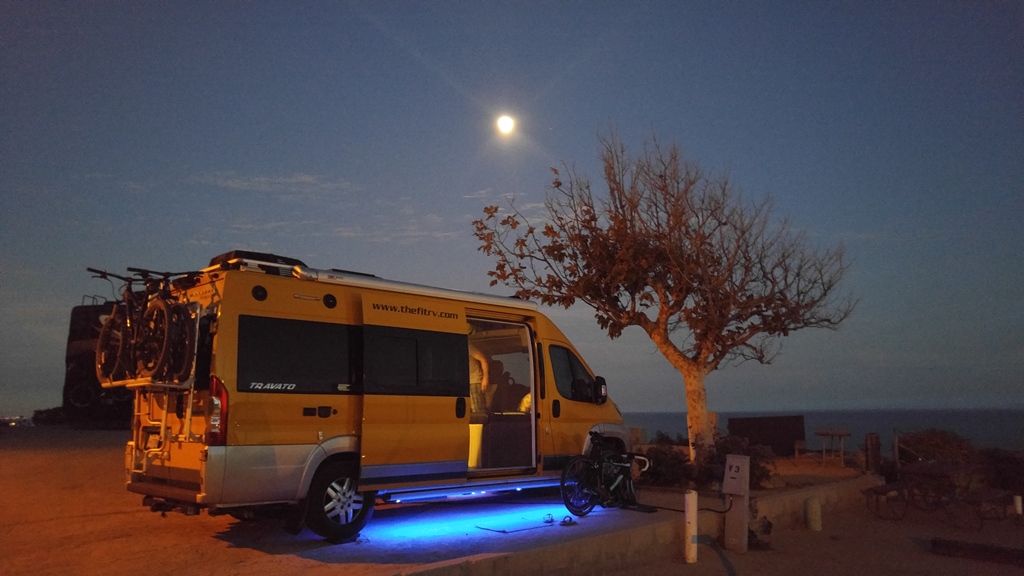 "Four bikes in this shot -- all of them locked."
"Four bikes in this shot -- all of them locked."
At a campsite, I can get away with a little less security. We're usually nearby. Other people are usually around. And someone running an angle grinder at the Grand Canyon is certainly going to get noticed. Even so, security is still important, so I follow these guidelines.
First -- look for a non-removeable object to lock your bikes to. You don't want something that can be pulled out of the ground, chopped off like a sapling, or stolen and tossed into a pickup bed along with your bike. Fence posts work well here. But not the links of a chain link fence, for example. Sign posts also work well, if they're near your campsite and you're legally permitted to lock to them. Picnic tables may or may not work, depending on their construction, and I usually avoid them.
If you can't find a suitable pole, you can always leave your bike locked on the rack, assuming you have one. If that doesn't work for some reason, the trailer hitch is one of my favorites.
The trailer hitch is always there. Just about every RV has one. They're typically rated for some pretty serious loads, which is good. And at night, if someone tries to cut through some part of it, it's likely going to wake you up.
The main caveat with using the trailer hitch to lock your bikes is DON'T FORGET ABOUT IT AND DRIVE OFF!
Let's say you're in a "last resort" type situation. You need to lock your bike, but there's no bike rack, no pole, no tree. Nothing. What do I do in these situations?
Well, the first thing to remember is that, if you follow the Sheldon Brown method and lock your rear wheel through the rear triangle, the bike is STILL UN-RIDEABLE even if it's not locked to anything. It's not great, but it's better than nothing. Secure your U-lock, Chain, or cable lock to your bike as if you had a pole to lock it to. At the very least, nobody is rolling your bike away. They're going to have to carry it or throw it in a truck.
If you have two bikes in this situation, you're in even better luck. In this situation, I secure the bikes to each other, using the same rear-triangle locking method. Again, nobody's rolling them away. And even if they wanted to toss them into a pickup truck, it's going to be an awful mess to try to pick up.
So, hopefully, now you know a little bit more about how to keep your bikes secure. That's the second most important thing you can do with your bike, besides ride it. And speaking of riding, it's a great day outside, so I am outta here! See you on the road.
James
Comments
Comments on this post are moderated, so they will not appear instantly. All relevant questions and helpful notes are welcome! If you have a service inquiry or question related to your RV, please reach out to the customer care team directly using the phone numbers or contact form on this page .
